抹不去的藏北那曲记忆
季叶海
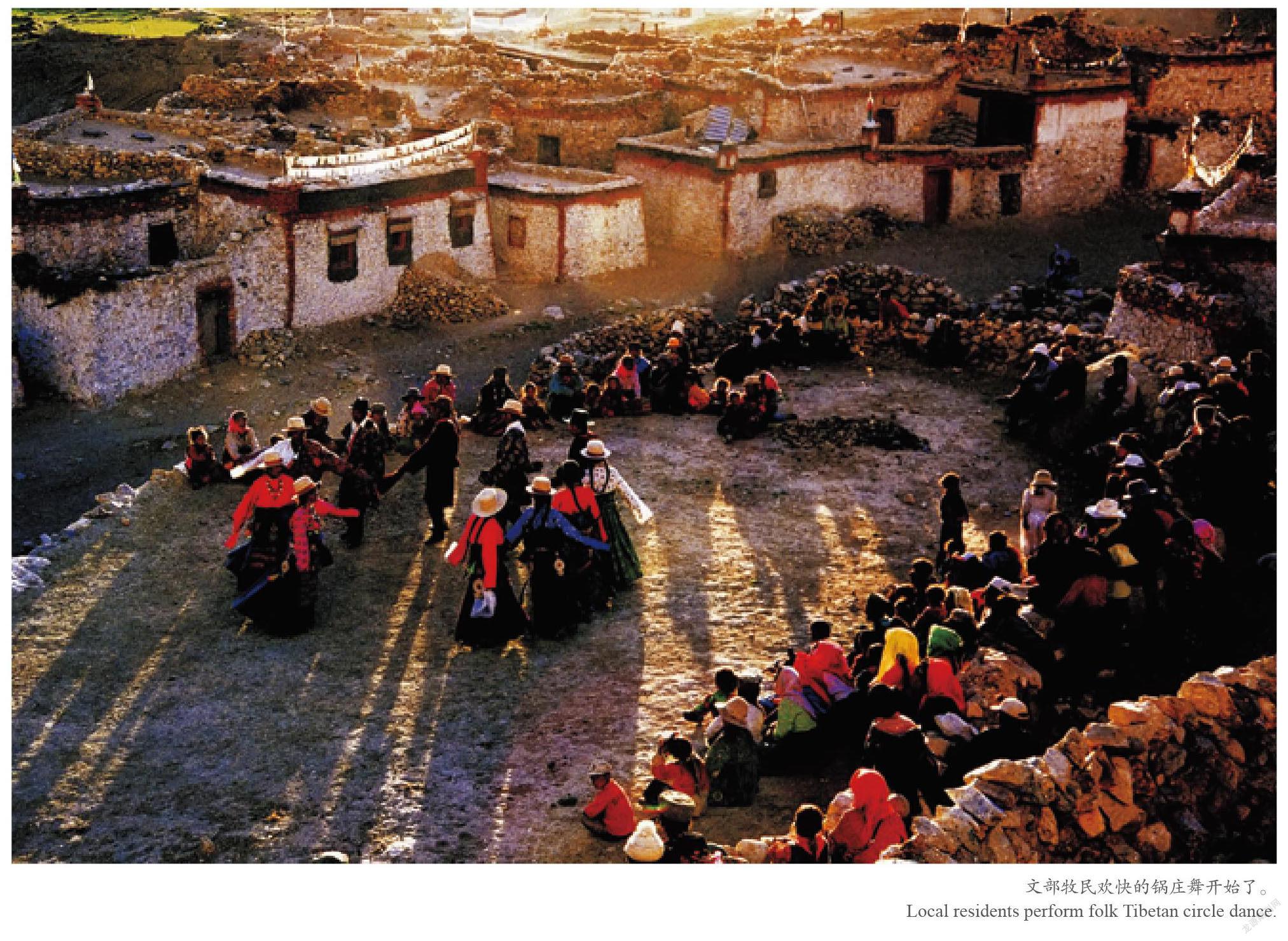
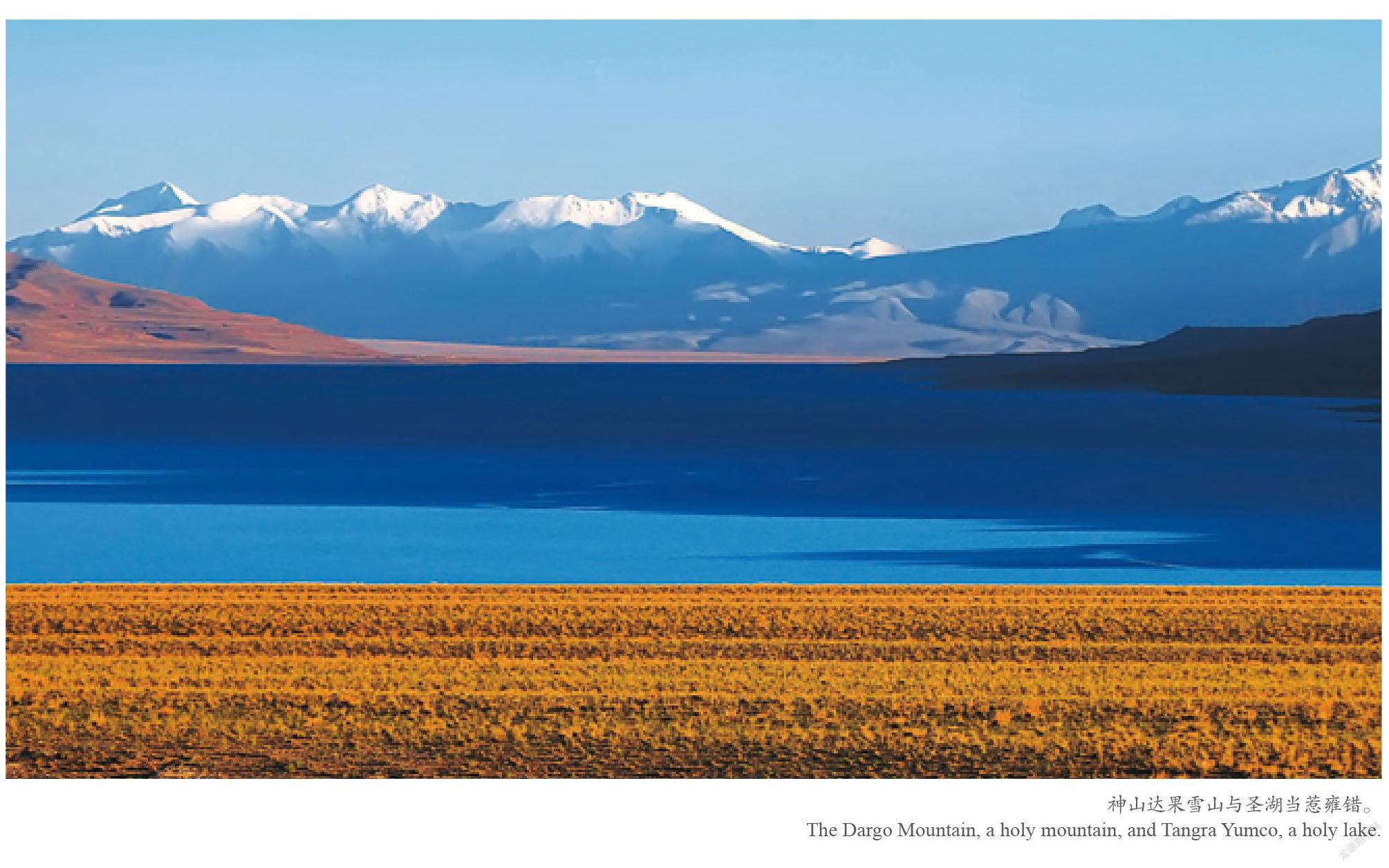
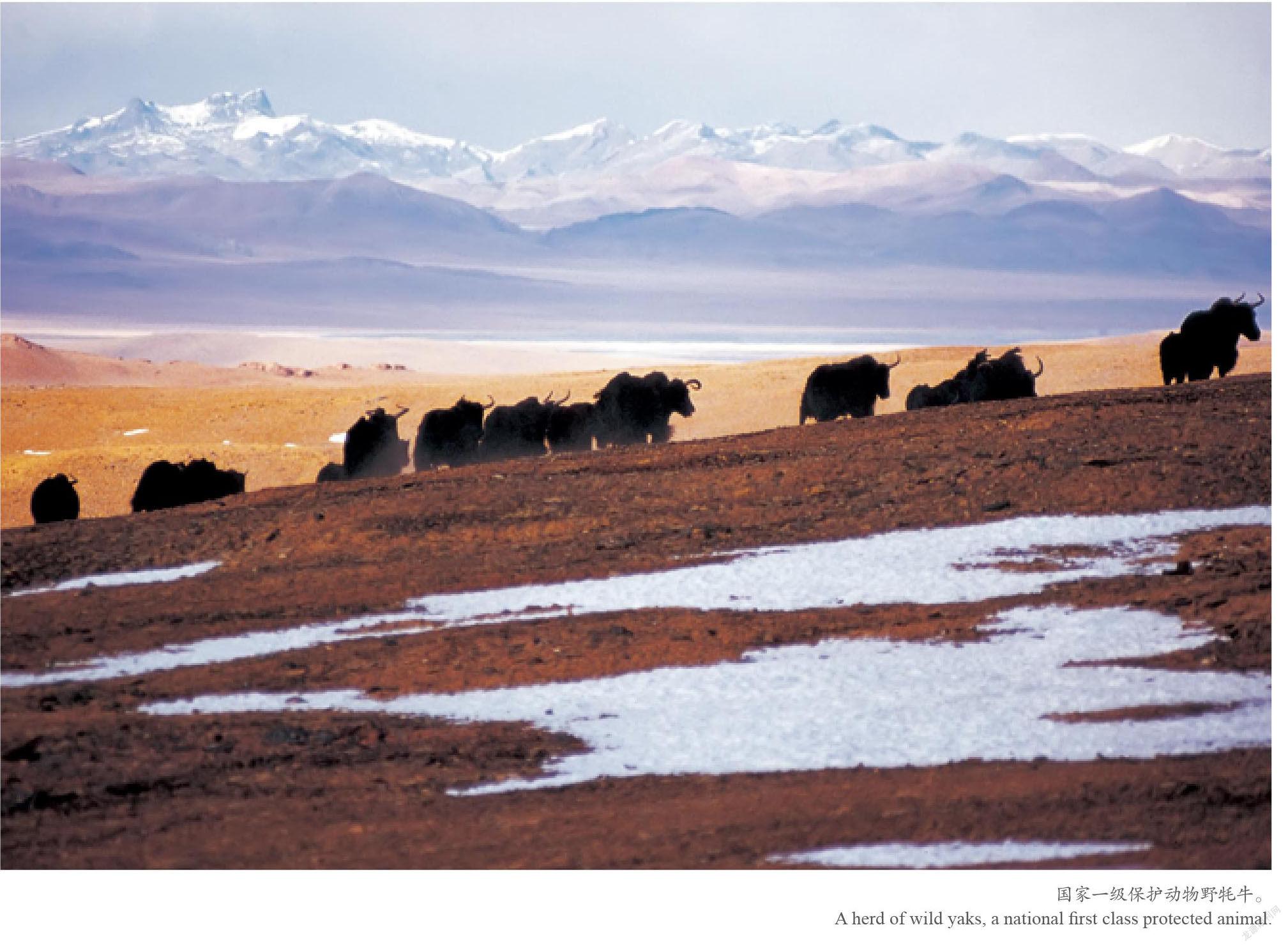
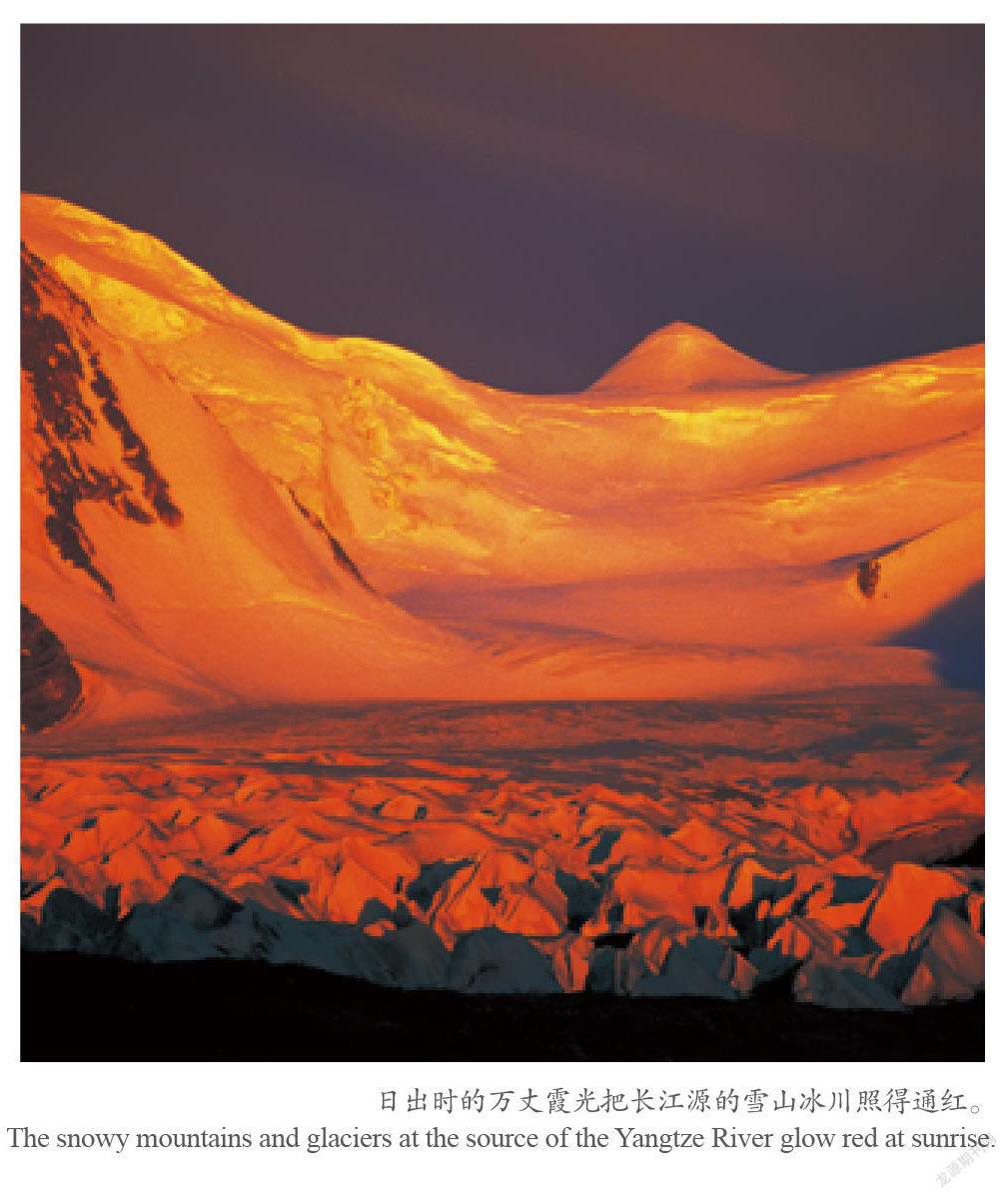
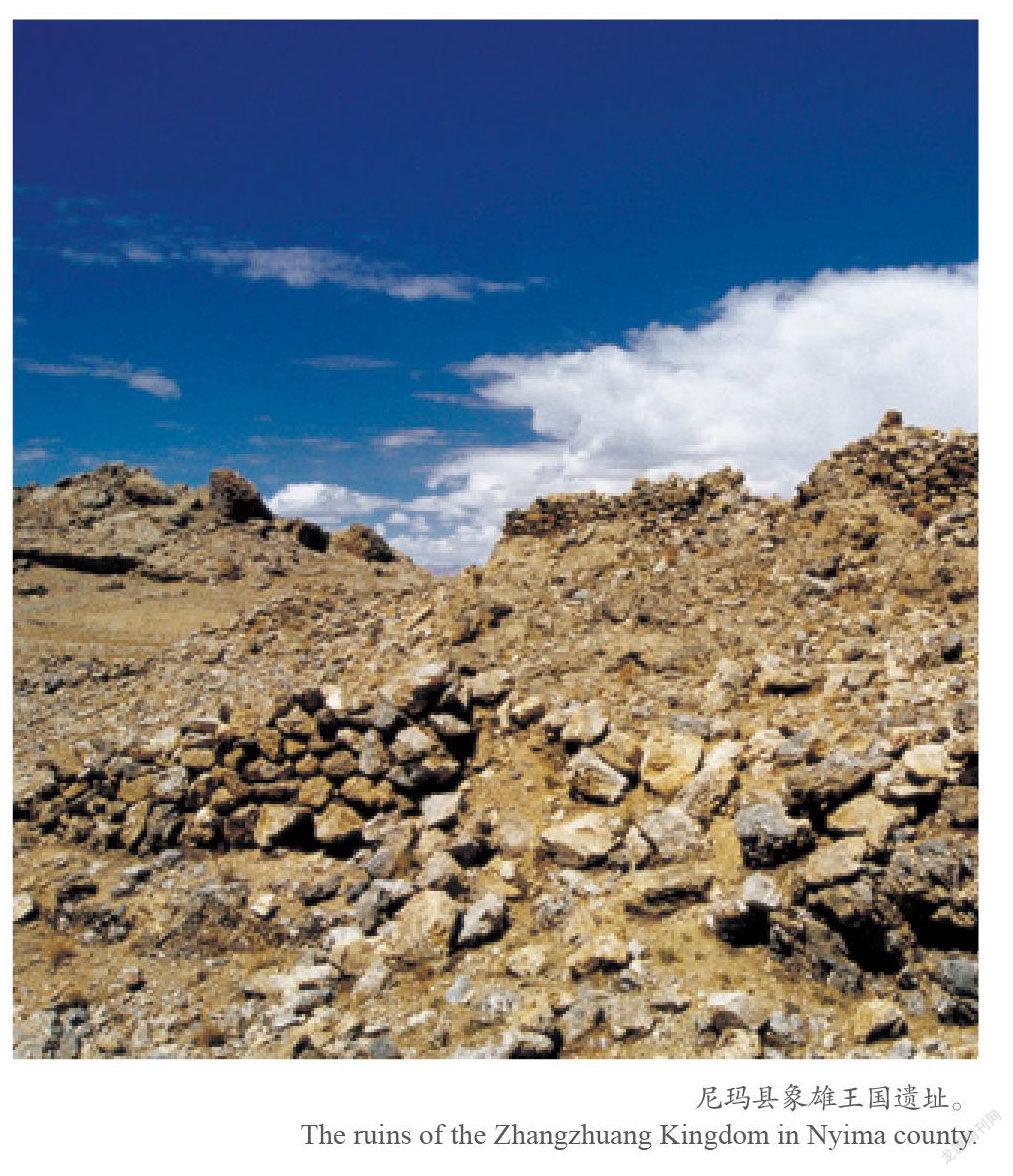
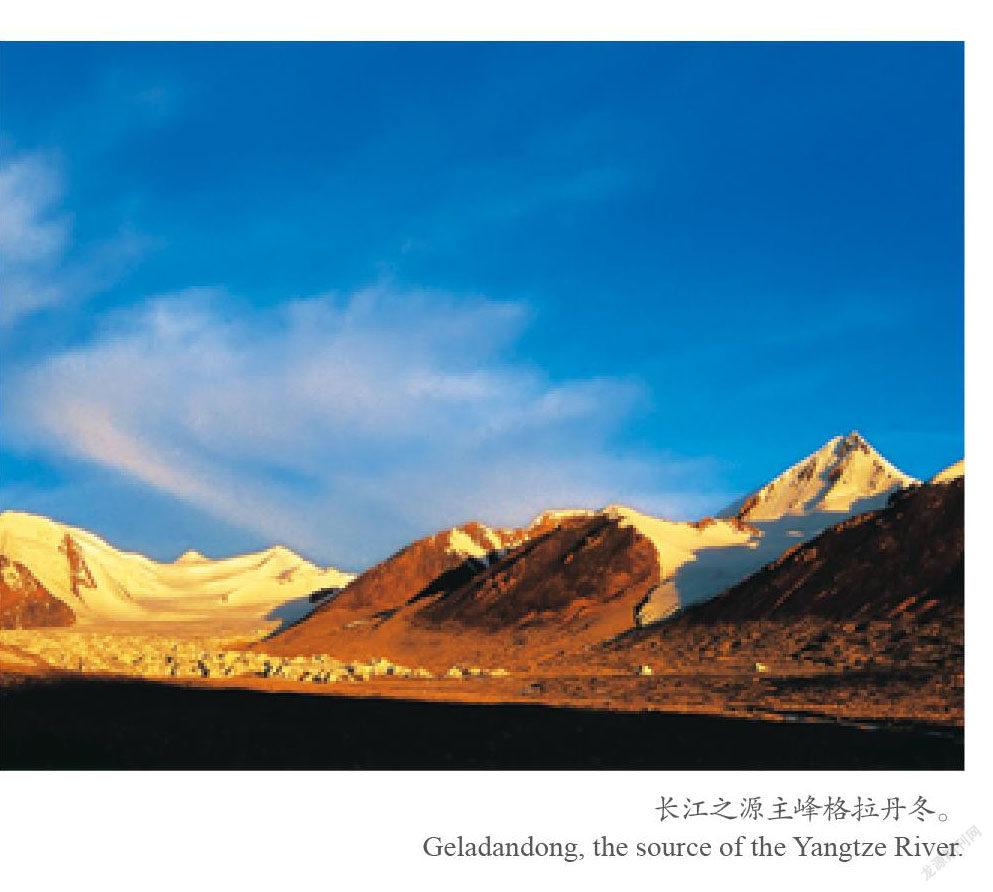
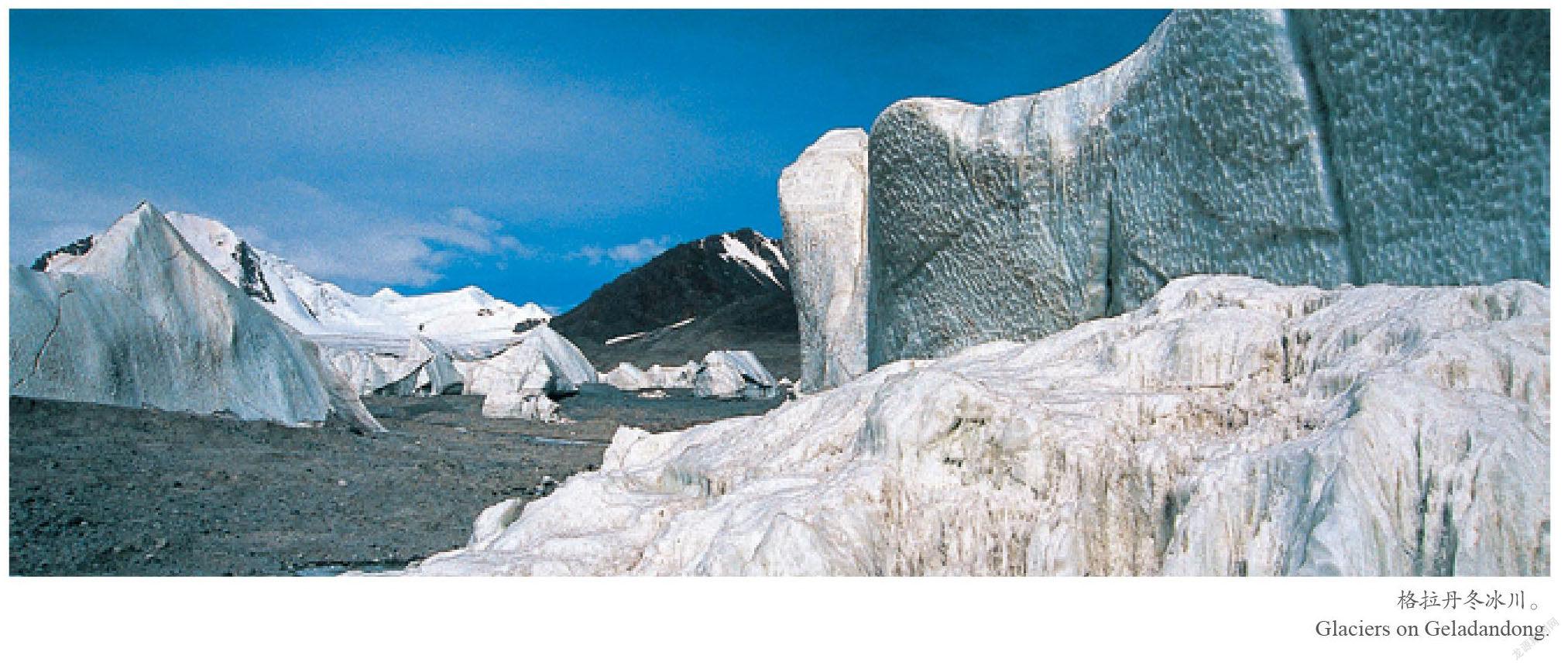
藏北那曲独特的自然、人文景观,为人熟知的仍然屈指可数。格拉丹东、当惹雍错、野牦牛、象雄文明……很多旅人和摄影者闻所未闻。只要你踏进那曲这块神秘的土地,看见最原始的风貌,你就会终生难忘。
长江问源
“我住长江头,君住长江尾。日日思君不见君,共饮长江水。”这首抒写“长江头”的词,总会让人对长江源头充满无限遐想。随着人们生活条件的提高,如今去那曲自驾游的人越来越多,许多人乘着夏季来临实现了探访长江源的夙愿。
我们的越野车从那曲出发,沿青藏线北上至100道班300多公里的路程,都是水泥柏油马路,比较轻松。转折点就在这儿,从100道班附近一条不太显眼的土路向西,就是通往格拉丹冬的唯一道路。这段路有90多公里,主要是草甸、沙地。放眼望去,光秃秃的山丘,千疮百孔的草甸,显得十分的荒凉。据当地向导介绍,这一带过去是一片绿油油的草场,常常可以看见各种野生动物在慢悠悠地吃草漫步,现在草场减少了,沙地多了,野生动物也离得越来越远了。
沿途有一条河叫尕尔曲,弯弯曲曲,不知从何而来,河床一段宽一段窄的,一路上要多次从河床上跨过来跨过去。如果没有向導,面对这样的曲折之路一定会迷路。这个时节,河面的冰层已经开始融化,流水夹杂着冰块和泥沙。面对尕尔曲,真叫人不敢相信,这就是长江上源之水?如此浑浊?河床冲刷得像被挖掘机肆虐过一样。
经过90公里的土路,颠簸了4个多小时,终于来到了长江源头格拉丹冬。傍晚的天空突然刮起了大风,下起了小雪,格拉丹冬主峰隐藏在云雾之中,面目难辨,让大家感到非常的失望。
我们把车子开到再也不能前行的地方停下,并就地扎营。
夜幕降临,风停了,雪止了。举头遥望夜空,夜空是多么的爽朗,星星特别大、特别多,好像伸手可及。环顾四周,是高耸的雪山和寒光四射的冰川,我不禁哆嗦了一下。站在这样的荒原上,我的脑子突然空白一片,飘飘然的感觉仿佛不是在人间。这里根本没有人间灯火,只有那冰川的点点融水,在万籁俱静的天地里,流水声显得格外清晰,这便是母亲河长江的最初乳汁啊,它从我的耳孔穿过,流进我的心田,一种自豪感顿时油然而生。
我们都躺在一顶大帐篷里。但是,我翻来覆去就是睡不着觉。渐渐地,我的头开始疼了起来,翻一个身,呼吸都感到吃力,这是我在西藏近3年来从没有过的难受感觉。我知道,这里海拔5300多米,气温在零下10度左右,薄薄的一顶帐篷怎能御寒,高寒缺氧是谁也改变不了的。心想,这个晚上我一定要熬过去,明天是再也不住帐篷了。天还没亮我们都起床了,一看,帐篷上满是霜花,被头已经发硬,杯子里的水全结成了冰。互相一问,原来谁都没有睡着。
帐篷边是我选定的最佳拍摄位。日出时的万丈霞光把格拉丹冬雪山冰川照得通红,我拍到了理想的照片。
吃过早饭,我们走近冰塔林,与长江源来了一次亲密接触。路上,向导指着岩石裸露的地表对我说:“这附近我小时候看到的都是冰川,现在融化光了。”研究表明,由于全球气候变暖,长江源有的冰川最多每年退缩50余米,速度惊人。我把镜头对准了正在消融的冰川,心中不免产生一丝丝的悲凉……
雪山把我召唤,雪水涤荡心灵。去格拉丹冬摄影,实际上是完成了一次心灵对自然的朝圣。
遭遇野牦牛
第一次遭遇野牦牛是在双湖西北部。那天,我们从双湖出发,经过嘎措乡,在一望无际的荒原里向北行驶了5个小时。司机说,我们已经到了可可西里无人区边缘了。“可可西里,野生动物的乐园!”但为什么就是一直没有遇见野牦牛呢?我心里犹豫不决,回去还是继续寻找?正当我焦虑之时,突然发现对面山脚有两个移动的黑点。向导用望远镜看了看,兴奋地对我说,是野牦牛!顿时,我有一种发现新大陆的激动,他们也露出了笑容,因为每一个藏族群众都喜欢看野牦牛,野牦牛代表着一种雄性的力量之美。
越野车沿着山脊毫不犹豫地开了过去,两个黑点似乎感觉到我们的声息,跑得越来越快了。油门踩到了60码的速度还是追赶不上,只能拍到它的背影,我仍不甘心。忽然,眼前出现一个小山丘,我脑子一激灵,对驾驶员说:“别死追了,我们从左边走,绕过去或许能正面撞见。”果然,转了半个小山包,我们和野牦牛形成了迎面相向的格局,野牦牛突然看到迎面而来的汽车,一时愣在了那儿,我们也不敢贸然靠近。就这样,双方对峙了两三分钟,我抓住时机连忙按下快门。才拍上两张,野牦牛似乎回过神来了,竖起尾巴,一脸恼怒,径直朝我们奔来,我说:“不要慌,再让我拍一张。”司机哪里听我的,话音未落已调转车头逃命。司机说,野牦牛力大无比,可以掀翻卡车,我们的越野车自然不在话下了。这下,我们和野牦牛发生了角色互换,野牦牛怒气冲冲地在后面紧追不舍,我们胆战心惊地在前面逃。大概经过三四分钟的生死时速,野牦牛或许已不再感到我们是危险了,或许对我们没有兴趣了,于是放弃了追赶。
拍完这些照片,我不得不停下来思考一个问题:羌塘草原的野生动物之所以能够存活下来,是因为它们选择了有利的地形保护着自己的繁衍生息,但在现代人类文明面前,它们又是那样的无奈。如果没有全人类的共同呵护,野生动物的天堂很快就会变成它们的刑场。
寻找香巴拉
香巴拉,藏族人心目中理想的居住王国,那里风景优美,那里没有痛苦,犹如陶渊明笔下的世外桃源。香巴拉,你在哪里?
尼玛县有人说要带我去一个地方,那就是香巴拉,它的名字叫文部。
文部乡有两个村庄,村庄都依神湖当惹雍错而建,远方是白雪皑皑的达果神山。这山这湖都是苯教信徒心目中的神山神湖。我到达文部的那天,恰恰看见一位头裹红纱巾的少女,赶着一群绵羊,站在当惹雍错旁的草地上,正抬头仰望着远方,远方的达果神山。我无法猜测她的思想,但我看见的是一幅多么美妙的天然画卷!多么意味深长的人生风景!
晚上,这里既没有自然界的虫鸣声,也没有人世间的喧哗声。我静静地听着,74岁老村民丹巴珠扎给我讲述神湖的传说:当惹雍错湖底中央有一座宫殿,宫殿四周都响着悦耳的铃声,有很多动物嬉戏其间。宫殿里有一座用叫作“阿玛勒格”的宝石制作的宝座,宝座上刻有大象、龙、凤等图案,宝座上面还有一座用水晶雕琢的十三层宝塔……正因为湖底有这么一座宫殿,所以为人们所朝拜,成为神湖。
文部附近的瓊仲,传说是象雄王国的遗址。丹巴珠扎听说我要去探访象雄遗址,兴致勃勃地为我讲起象雄的传说 :象雄王国的第一个国王叫勒威国王,那时有12万户,现在的阿里也属其管辖,称作西边。皇宫就建在琼仲山上,就在离我们村不远的当惹雍错畔。皇城附近住着1万户居民,他们以从事农业劳动为主……这是一个颇有诱惑力的传说,老人的叙述,使我一睹为快的愿望更加急切了。
琼仲山离村庄约15公里,汽车不能通行,只有步行,或者骑马。第二天,我们早早就准备好了马匹和食物,决定去探个究竟。我们一直沿着湖岸穿行,湖面宽阔,湖水湛蓝,晴朗的天气给人以很通透的感觉,大家兴致高昂。经过3个小时,终于到达了琼仲山。
琼仲山朝向当惹雍错的一边是悬崖,落差有200多米。山上怪石嶙峋,岩壁上一毛不长。山脚有一些并不茂盛的小草,在草丛和碎石间,成群的藏雪鸡、奔跳的野兔自由自在地嬉戏着、欢唱着。在山背,我们仔细地寻觅着遗址的痕迹,终于发现几段矮矮的墙脚和一片土墙。我们无法断定它是不是象雄王国的遗址,但它确实是人工留下的痕迹,看着墙脚被风蚀的石头,它们应该有不短的历史。据说,也曾有一个外国专家来过,但这里毕竟太偏远了,传说也太久远了,所以有定论的文字几乎没有。这样一个地方,至今仍让我难以忘怀,常常叫人浮想联翩。
回到文部,已是日薄西山。蓦然发现湖边一片绿油油的东西闪着光亮,原来是青稞。在海拔4530米的地方能种植青稞,西藏只有文部,而且在湖边还有一片小树林。
在村头,一批牧民扛着锄头从山上下来,他们正要登记当天劳动的工分。劳动结束,欢快的锅庄就要开始了。在一块平坦的空地上,很快聚集了许多牧民。你听,一个男声领唱,一片女声接应;你看,长袖子甩了起来,身子也扭了起来。没有器乐,但节奏鲜明;没有换场,但高潮迭起。能歌善舞是藏族群众的的天性,过去,我只看过舞台表演的节目,而歌舞作为他们生活的一部分,那天是第一次耳闻目睹。不多久,他们都出汗了,但他们却越跳越有劲,越跳越动情。晚霞是一幅绚丽的背景,天地是自由挥洒的舞台……
这就是香巴拉,传说与历史碰撞,梦幻与现实交错,日子就这样流淌,快乐就这样来临。
香巴拉,不必寻找。
Unforgettable Nagqu in Northern Tibet
By Ji Yehai
Among all the unique natural and cultural scenes of Nagqu in northern Tibet, only a handful are well-known. Geladandong, Tangra Yumco, wild yak, Zhang Zhung civilization ... there are just too many things the travelers and photographers have not heard of. However, once you set foot in the mysterious land of Nagqu and see the landscape in its most original way, you will never be able to erase it from your memory.
Nowadays, more people choose to go to Nagqu on self-drive tours to fulfill their long-cherished wish of visiting the source of the Yangtze River in summer.
The off-road vehicle took us from Nagqu and went northward along the Qinghai-Tibet route to the No.100 daoban (railway maintenance squad) for over 300 kilometers. These are concrete tarmac road, a relatively easy drive so far. From the No.100 daoban, the turning point, we continued our trip on a humble dirt road to head for the west, which is the only road to Geladandong. This section of the road is more than 90 kilometers, mostly meadows, sand and bare hills, looking very desolate. According to the local guide, this area used to be a lush green meadow, where all kinds of wild animals were often seen strolling and grazing leisurely. But now the meadow has shrunk, giving way to sandy land and pushing wild animals farther and farther away.
After 90 kilometers of bumpy ride for more than four hours, we finally arrived at the source of the Yangtze River, Geladandong. It was evening, and suddenly it went all windy and snowy. The main peak of Geladandong, as a result, was obscured by thick clouds, which made everyone feel very disappointed. We then got back in the car and drove on until we could no longer proceed, and stopped to camp on the spot.
The night fell, and both the wind and snow stopped. Looking up, the night sky appeared so bright and the stars particularly large and numerous, as if they were within easy reach. I looked around, seeing the towering snow mountains and cold glaciers, I could not help but shiver a little. My mind suddenly went blank, as I was standing in such a wilderness but felt like floating into the air. There was no artificial light at all, only drops of water gurgling from melting glaciers. In the world of tranquility, the sound of flowing water is particularly clear. This little creek of the Yangtze River, the origin of our mother river, flew into my heart and filled me with a sense of awe.
We were all lying in a big tent. However, I kept tossing and turning, unable to fall asleep. Gradually I felt a headache and found it difficult to turn over or even breathe, which was the most terrible moment I ever experienced since my past three years in Tibet. Knowing that the altitude here was more than 5,300 meters and the temperature was about minus 10 degrees Celsius, I understood how little our thin tent could do in keeping us warm, and nothing could be done about the lack of oxygen here. The next day we all got up before dawn and found the top of the tent fully covered with frost. It turned out that none of us had any sleep.
Near the tent there was a good spot for taking photos, and I got the ideal one as the glacier bathed in the red light of the sunrise. After breakfast, we approached the ice tower forest to have a close look at the source of the Yangtze River. On the way, the guide pointed to the bare surface of the rocks and said to me, “when I was a child, glaciers were seen around here, yet now they are melting away.” I turned my lens on the melting glaciers, and my heart could not help but feel a tinge of sadness.
The first encounter with wild yaks was in the northwest of Shuanghu. That day, we started from Shuanghu, passed through Garco, and drove north for five hours in the vast stretches of wilderness. The driver said we had reached the edge of the uninhabited area of Hoh Xil, “a paradise for wild animals”. But why hadn’t we met any wild yaks? I was indecisive about whether to go back or keep searching. Suddenly I found two moving black dots at the foot of the mountain in the opposite direction. The guide looked through his binoculars and excitedly announced that it was the wild yaks!
Our SUV drove along the ridge without hesitation, yet the two wild animals seemed stirred and ran increasingly faster. We pushed up to 60 kilometers per hour but still couldn’t catch up. I could only capture a view of their back with my camera, and that was not enough. Just then a small hill appeared in front of me and an idea flashed into my mind. I quickly said to the driver, “Maybe we stop chasing from behind. Surpass from the left side, and we will meet them head-on.” We drove around the hill and, just as expected, found ourselves heading towards the wild yaks, which suddenly froze for a moment after seeing the oncoming car. But we did not dare to get closer either. During the two or three minutes when both sides stood motionless, I seized the opportunity to hurriedly press the shutter and took two quick shots.
After taking these photos, I had to stop and think about one question: the wild animals in the Qiangtang Grassland have survived because they have chosen a favorable terrain to protect their prosperity. However, in the face of modern human civilization, they are so helpless. Without effective protection from human beings, the paradise of wild animals will soon become their graveyard.
Shambhala is the ideal kingdom for Tibetans to live in, a place of beautiful scenery. It is like a paradise, where there is no pain. But where is it exactly?
Someone from Nyima county took me to a place called Wenbu, and I felt it is like Shambhala. The day I arrived at Wenbu, I happened to see a red-scarfed young girl herding a group of sheep. She was standing in the grassland looking up at the mountain in the distance. What a wonderful scene of nature and life!
At night, there was neither the sound of insects nor the noise of the human world. I listened quietly as a 74-year-old villager told me some fascinating legends of the sacred lakes and mountains. I couldn’t resist my curiosity and visited a mountain called Qiongzhong Mountain the next morning, on a horse back. It took me three hours to get there. The historical mysteries there were impressively unforgettable, and I felt the trip so worth the trouble.
Back in Wenbu, it was already sunset. At the head of the village, a group of herdsmen came down from the mountain carrying hoes, finishing the day’s labor. And that was when a cheerful ritual was about to begin. Many herdsmen soon gathered in a flat open space, surrounded by singing from men and women. No instrumental music or change of scene, there was just a mass of people dancing and singing, continuously bringing the atmosphere to a climax. In the past, I had only watched stage performances. That day was my first time to enjoy off-stage singing and dancing, or rather, the joyous daily life of local people.
I guess I have already found Shambhala, a place where legend meets history, dream alternates with reality, and happiness is always there to stay.

